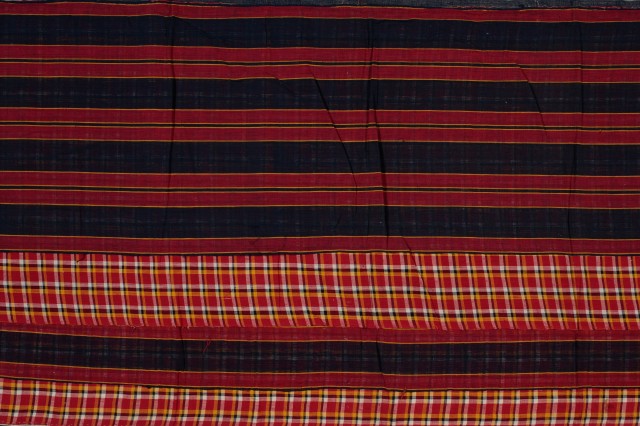Wrapped up in Culture
A look at some of the rarely seen textiles, fabric and clothing in the Anthropology collection

SEPARATING TEXTILES FROM CLOTHING
Few things are more essentially human than clothes, so it should come as no surprise that NHM’s Anthropology Department has an impressive collection. However, their size and material often make them difficult to display for any length of time, which is why many of these beautiful objects are less well-known to museumgoers. Luckily, our Anthropology Collections Manager KT Hajeian is “walking” us through some of the hidden treasures in NHM’s closet and the special treatment these items need.
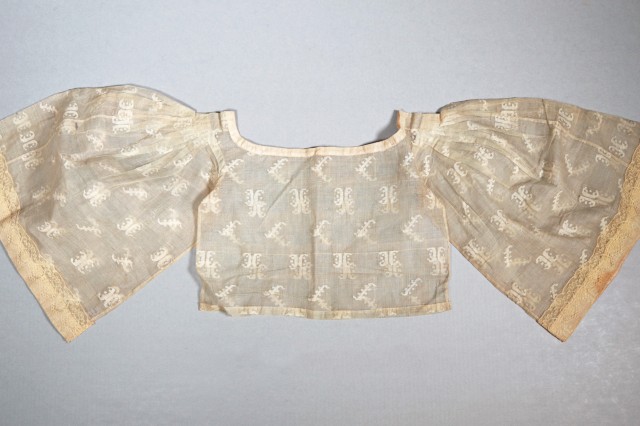
Dated between 1898 and 1902, this blouse from the Philippines was made from a type of laurel locally called makatu, a rarely used material, while cotton lace was added along the sleeves' edges.
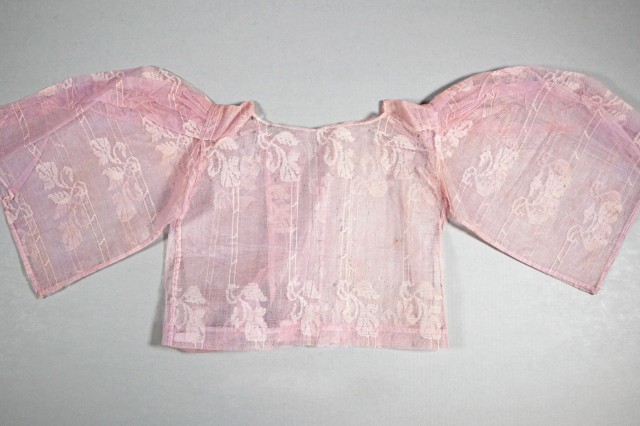
This blouse and its full bell sleeves made of woven piña fiber, a traditional Philippine fiber made from pineapple leaves
1 of 1
Dated between 1898 and 1902, this blouse from the Philippines was made from a type of laurel locally called makatu, a rarely used material, while cotton lace was added along the sleeves' edges.
This blouse and its full bell sleeves made of woven piña fiber, a traditional Philippine fiber made from pineapple leaves
For something so essential, definitions around clothing can be hard to pin down. ‘Clothing’ are defined as ‘garments in general’, and ‘garment’ is ‘an item of clothing’. ‘Textile’ refers to woven or knit cloth, but as Hajeian notes: “You can have clothing made of all sorts of different material. For instance, a fur robe. I don't think we would necessarily call that a textile, unless the fur was woven.” The intention seems key here, whether it’s knit, beaten or skinned, clothing is what people wear (unless it’s jewelry, or accessories). “Descriptors, terms of what you call things, can be really strange like that.”
The fabrics of our lives
However you tailor your definition, the museums’ Anthropology’s collection of clothing and textiles spans the globe. Just to scratch the surface, there’s tapa and woven mats from the Pacific Islands, woolen items like capes and blankets from the Southwest of the U.S., pineapple fiber Philippine shirts, silk clothing from China, dance attire from Africa, and felt shoes from the Sami people of the Arctic. “[The Sami] have a lot of clothing made of felt, which is actually pretty similar to a Pacific tapa (which is a beaten bark cloth), because felt is just pressed and layered wool or fur fibers,” Hajeian says. ”We have a lot of [the Sami People’s] shoes, and the shoes have the pointed toes that curl back up.”
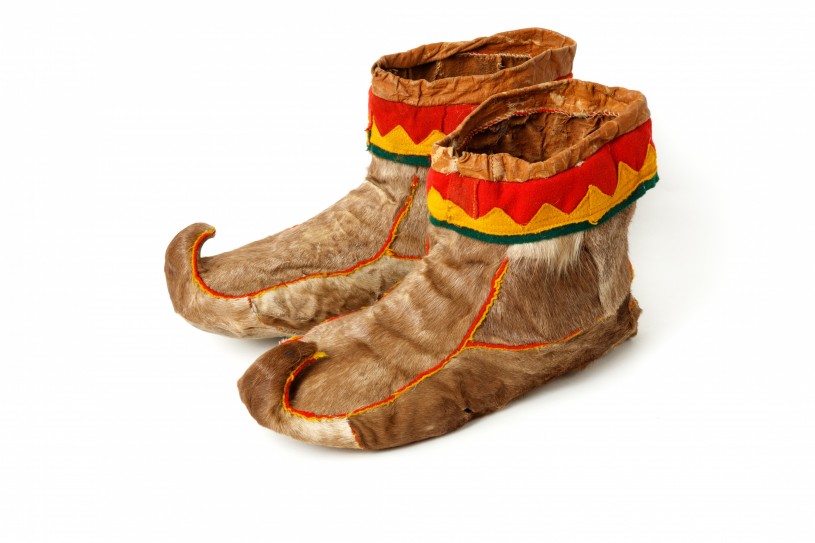
With their fur, thick felt and hard animal hide soles, Sami shoes were crafted for traversing tundras, and they aren’t the only prominent footwear housed in the Anthropology collection. Peruse just some of these incredible shoes below.
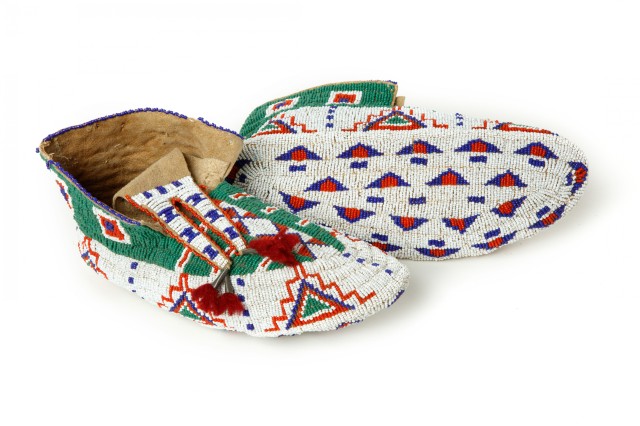
From the late 1800’s, these Yankton Sioux (Yanktonai, Western Dakota) moccasins have fully beaded soles and would've been worn on significant occasions like marriage or important social gatherings.
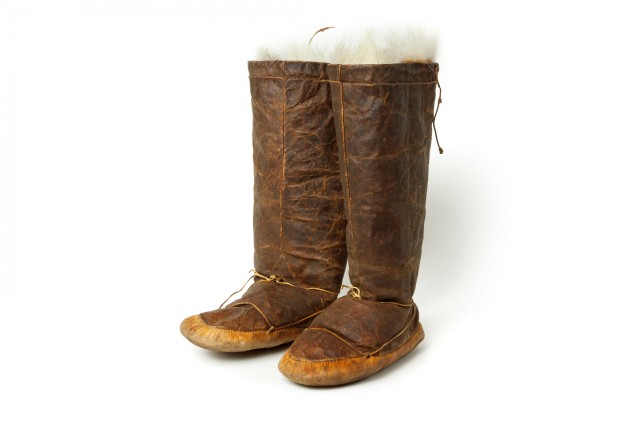
Made from a veritable menagerie of animals (seal skin on the upper portions of the outside, an inserted liner with rabbit fur on the inside, and an upper fringe of polar bear fur), these boots were collected in the Thule District of Greenland while the donors were on a 1976 Museum Narwhale Expedition.
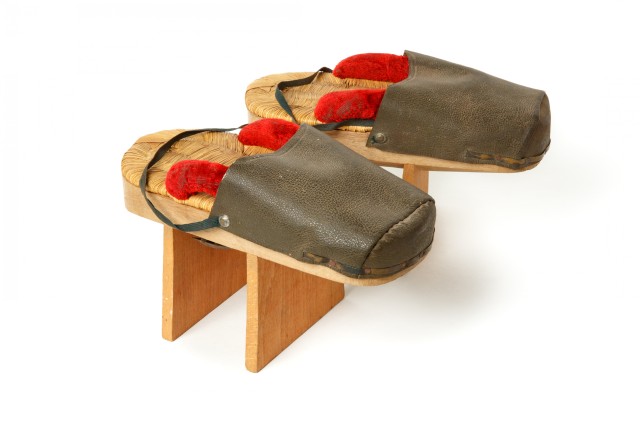
The extra height and leather toe covering of these shoes from Japan are meant to keep feet dry during heavy rain, supporting their description as "storm shoes".
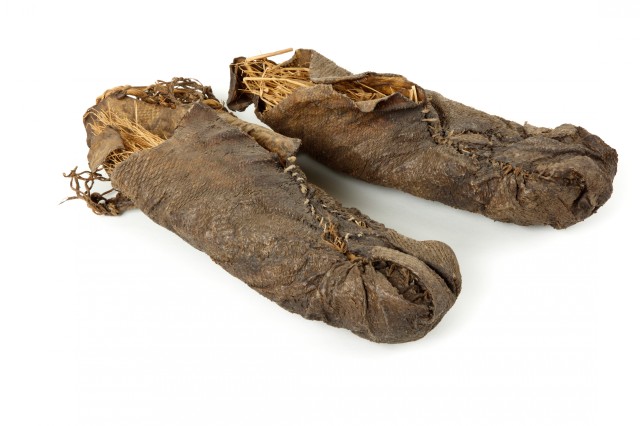
From the indigenous people of Japan, the Ainu, these "salmon skin winter shoes" would've have swelled and tightened to reinforce waterproof quality when wet, and the scales would provide traction for treading on ice or other wet surfaces. They were donated in 1948
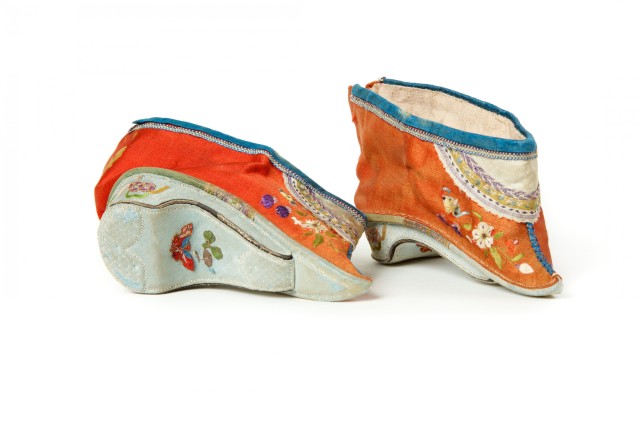
From Nanjing, China, these shoes for bound feet date back to the Qing Dynasty, c. 1900. The 4 in. size and lack of wear on the delicately embroidered soles indicate they likely belonged to a woman who walked very little, and did so among the elite.
1 of 1
From the late 1800’s, these Yankton Sioux (Yanktonai, Western Dakota) moccasins have fully beaded soles and would've been worn on significant occasions like marriage or important social gatherings.
Made from a veritable menagerie of animals (seal skin on the upper portions of the outside, an inserted liner with rabbit fur on the inside, and an upper fringe of polar bear fur), these boots were collected in the Thule District of Greenland while the donors were on a 1976 Museum Narwhale Expedition.
The extra height and leather toe covering of these shoes from Japan are meant to keep feet dry during heavy rain, supporting their description as "storm shoes".
From the indigenous people of Japan, the Ainu, these "salmon skin winter shoes" would've have swelled and tightened to reinforce waterproof quality when wet, and the scales would provide traction for treading on ice or other wet surfaces. They were donated in 1948
From Nanjing, China, these shoes for bound feet date back to the Qing Dynasty, c. 1900. The 4 in. size and lack of wear on the delicately embroidered soles indicate they likely belonged to a woman who walked very little, and did so among the elite.
Clothing reflects the environment and lifestyles of the people who produced it. While leather moccasins make sense for people taking long trips hunting bison for example, animal skins might be in short supply or less preferable in hotter environments. Clothing from the Southern Hemisphere is often made from plant material like shredded bark, pineapple fiber, hibiscus fiber or grass.
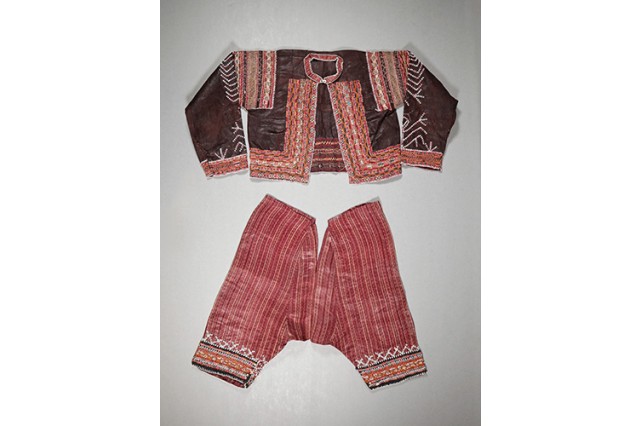
Dating from the early 1940s, this mens outfit is made from plant fiber and comes from the Bagabo, one of the largest indigenous groups of southern Mindanao in the Philippines.
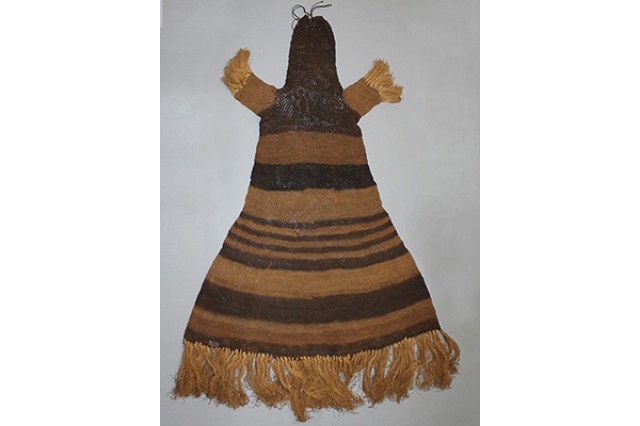
This is a ceremonial costume from Zambia, and it's made of netted plant fiber
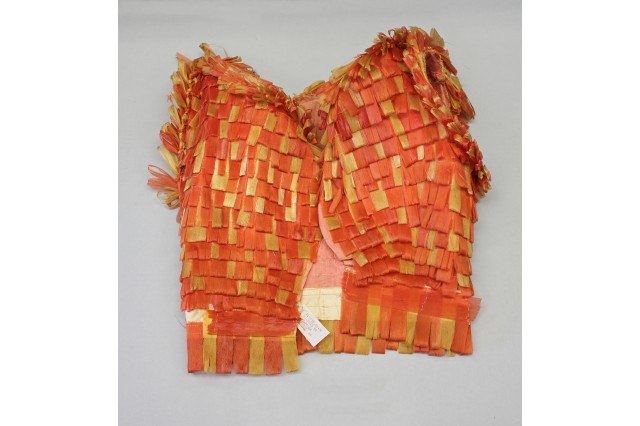
This shaped dance bodice from Samoa dates to the 1880s and is covered with strips of red and yellow hibiscus fiber. Cotton lines the inside for comfort and stability.
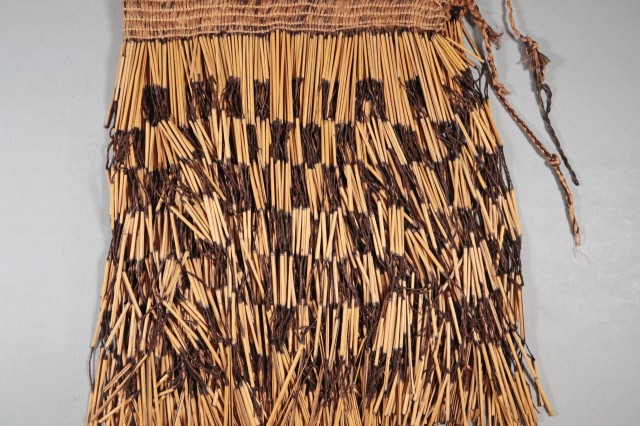
Collected in 1924, this Māori piupiu skirt is made from individual leaves of flax plant which each hang separately from the braided flax waist band.
1 of 1
Dating from the early 1940s, this mens outfit is made from plant fiber and comes from the Bagabo, one of the largest indigenous groups of southern Mindanao in the Philippines.
This is a ceremonial costume from Zambia, and it's made of netted plant fiber
This shaped dance bodice from Samoa dates to the 1880s and is covered with strips of red and yellow hibiscus fiber. Cotton lines the inside for comfort and stability.
Collected in 1924, this Māori piupiu skirt is made from individual leaves of flax plant which each hang separately from the braided flax waist band.
It’s important to remember that clothing can also be a manifestation of more abstract ideas, like spirituality or familial bonds. “There is a hairshirt,” Hajeian tells me. Also known as cilice, these itchy undergarments were (and still are) worn as a form of penitence in different faith traditions, an example of clothing connecting people to the divine. A number of different cultures from the Pacific Islands gift tapa, or barkcloth, during important life events such as births or marriages to represent shared bonds.
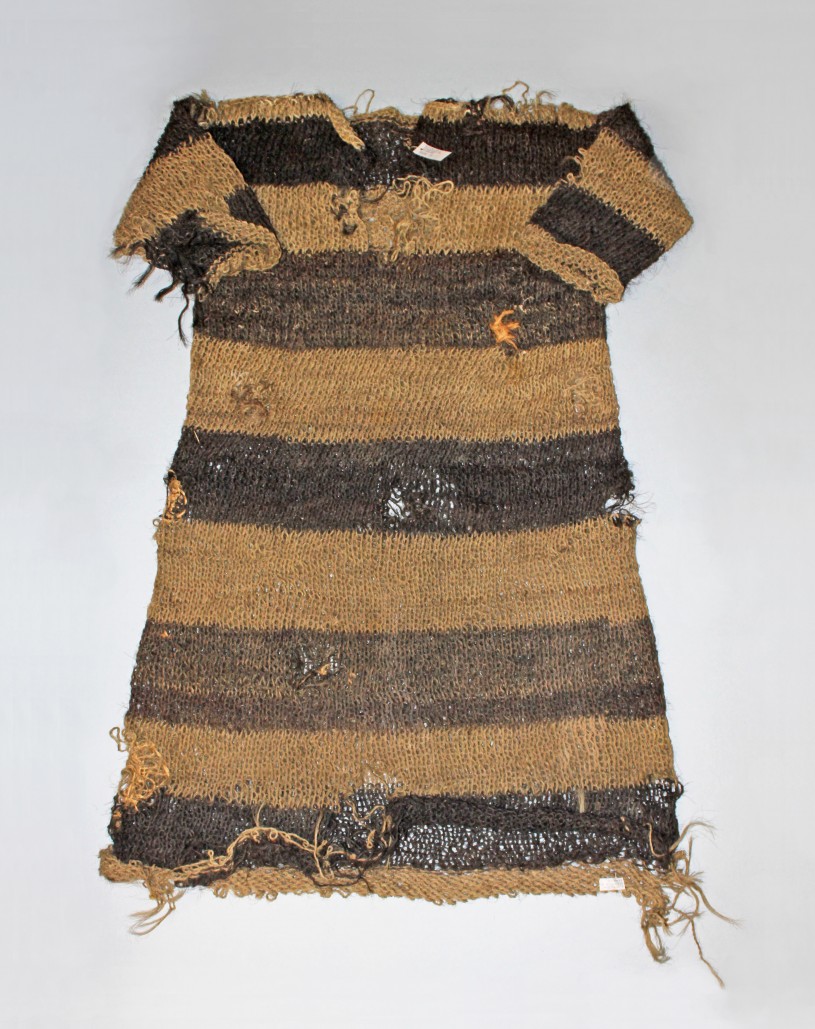
Proper Care of Your Clothing Collection
Storing and displaying these types of items poses special challenges. The organic material and dye in many articles of clothing is sensitive to light, and brittle material needs to be humidified before going on display. Museum visitors aren’t the only things hungry for more clothing. “Bugs love to go straight to the wool, and they love anything with feathers, and anything with fur,” Hajeian tells me. Which means that physically displaying some of the larger, more impressive pieces like Navajo blankets is especially challenging.
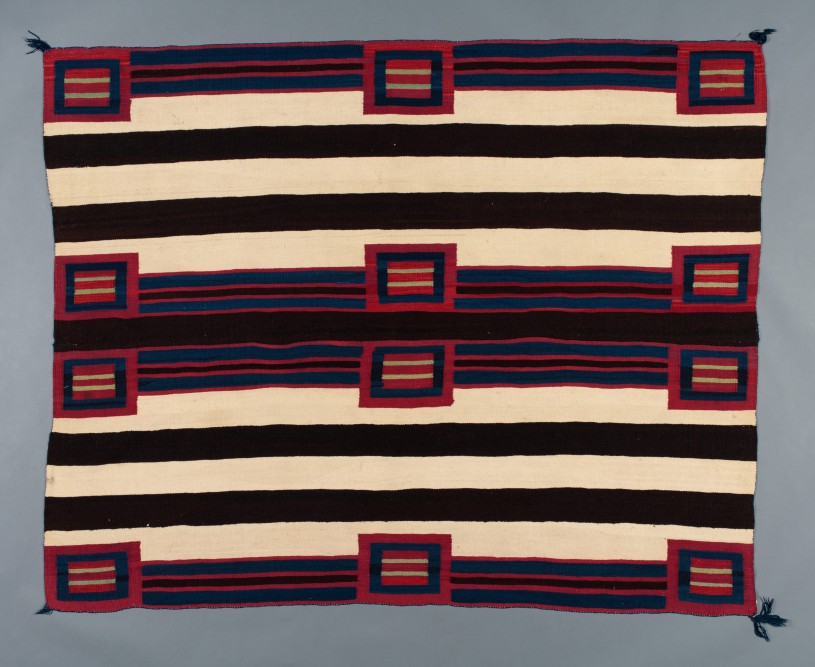
“We care for a well-known and historically significant collection of Navajo textiles, for instance.” “People often ask, "Can I see your Navajo textile collection?" Hajeian says. "The whole collection? We simply don’t have the space, so I can show you pieces.” Storage of delicate textiles like Navajo blankets can be tricky. Some items prefer to be rolled, while others bristle at the treatment, and the dimensions of some objects makes them difficult to fold, encase or otherwise stored in a way that facilitates viewing. The difficulty in displaying large textiles safely means that some of the most impressive items remain trapped in storage, but available for research.
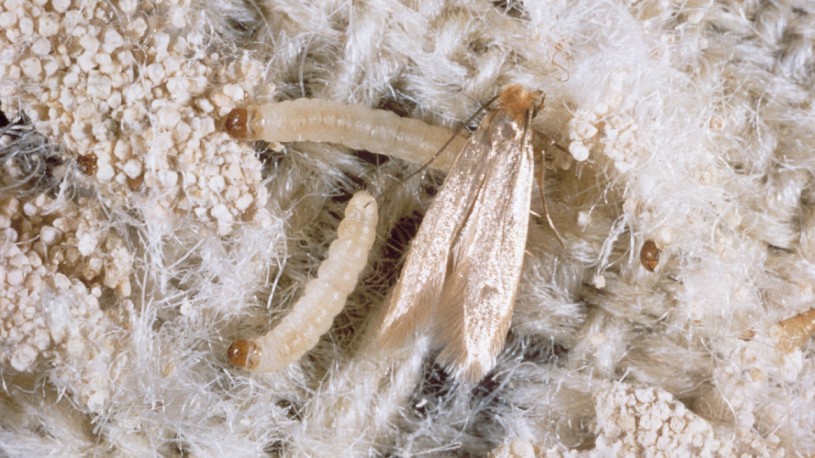
Unnatural History Collections
Even in a natural history museum, cultural collecting has always been unnatural. The items in the collection, as incredibly significant as they are, often represent the whims and interests of travelers often in search of whatever was ‘exotic’. Much of the donated items were collected by adventurous travelers at the turn of the 20th century, or doctors, teachers and military personnel stationed overseas – as opposed to anthropologists undergoing a rigorous study of a culture or the indigenous peoples themselves. In this sense, the collection reflects the interests and often misguided Western conceptions of the peoples from whom these items originated.
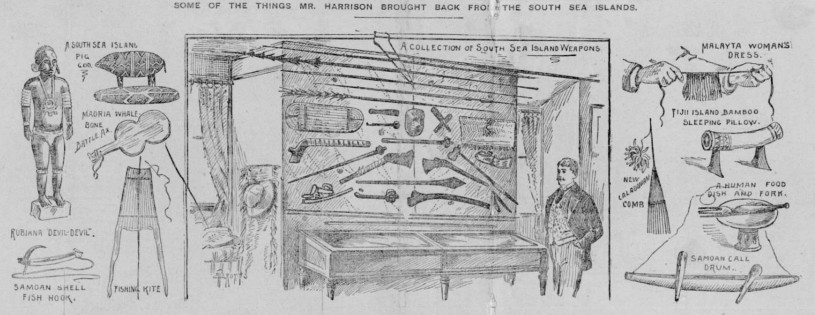
Beyond the biases of the items’ original collectors, removing an item of clothing from the context it came from can be unnatural in itself. “A lot of indigenous cultures have beliefs that these items are alive. It is an actual lifecycle,” Hajeian explains. Their materials come from the earth, and a lifetime (or multiple lifetimes), of use sees the objects return to the earth. “So it's strange to them to be left in a static environment like this.” Often these items were meant to be given as gifts; collecting or displaying them interrupts that life cycle. With items hidden away in the collections, researchers might be aware of their existence, but the living cultures that created those items may not be.
That’s one of the reasons Hajeian and the Anthropology team are working on digitizing these items. Digitizing collections offers another avenue for accessibility, making them easier to view by researchers, the general public, and the communities that produced them. This greater accessibility can help recontextualize collection items, tying them once again to something like their natural lifecycle. Our Anthropology team is looking forward to extensive digitization efforts in the near future. NHM’s got deep closets, and with the hard work of collections managers like Hajeian, we can all get a peek at what’s in the next drawer.

